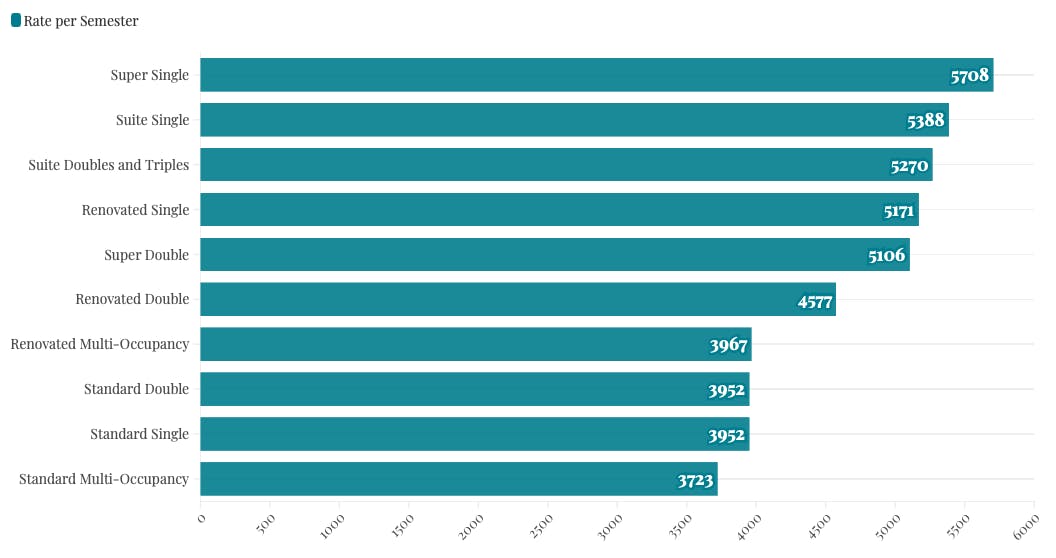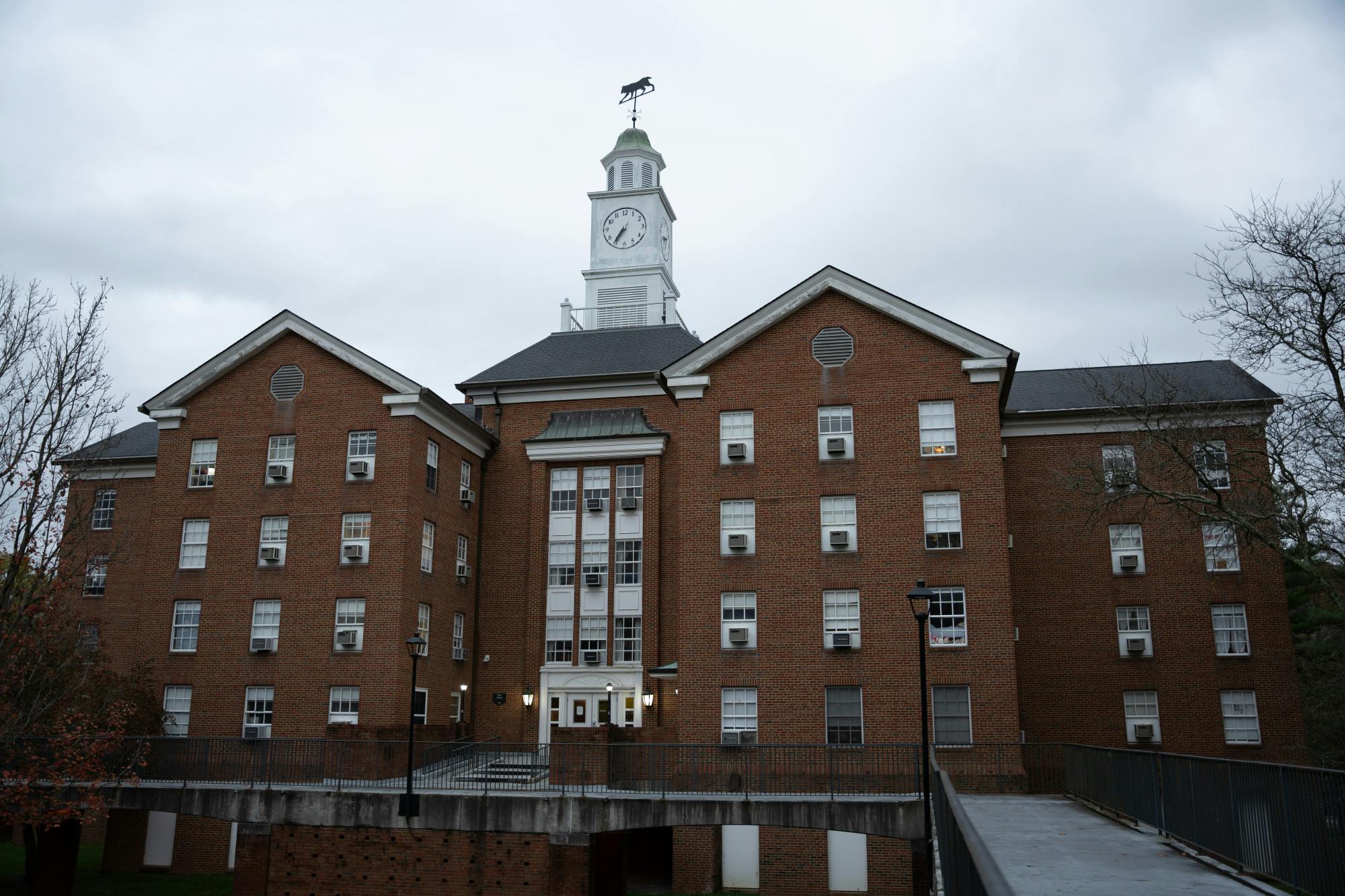With three residential greens and 36 residence halls, Ohio University offers a number of housing options for students. However, with increasing class sizes, varying hall configurations and differences in quality and age, questions about the dorms being equitable have been raised.
In the opinion of Executive Director of Housing and Residence Life and OU alum Jneanne Hacker, OU's approach to student housing is driven by the best interest of students. For example, the different greens allow a large, intimidating residential experience to transform into a more intimate, community-based experience.
Hacker also emphasized that the quality of the dorm doesn't determine a resident's experience but the experience they make for themselves.
"Students feel that they have to live in Jefferson, because it's newly renovated." Hacker said, "But it's not necessarily the hall that's going to create the students' experience, it's going to be the relationships that they build within the confines of their four walls."
In accordance with increasing class sizes, OU enacted an expanded occupancy management plan. This plan includes converting rooms designed to be triples but previously housed two residents back into triples. Additionally, OU partnered with River Park Apartments, offering 428 apartment beds to students, according to Hacker.
Hacker also noted that although a higher number of first-year students were residing in triples last year, retention rates of first years increased, meaning more students returned for a second year.
In addition to increasing housing options, OU is creating honors student housing. When designing living facilities for honors students, Hacker explained, OU Housing considered incorporating extra amenities and creating an inclusive space for all identities and budgets.
"We worked in collaboration with the dean of (the) HTC program to really be intentional with looking at residence halls that supported diversity and inclusion," Hacker said. "Not all honors students get full tuition, scholarships or room and board scholarships so price sensitivity was something that we took into consideration as we were determining where to place our Honors Program as well."
The cost of honors housing, located in Washington and Read, with overflow into Johnson, varies depending on renovations, offering affordability for residents. Additionally, honors dorms have small meeting spaces to help students thrive in their studies. Washington and Read Halls are even connected by a shared kitchen space.
Pricing for dorms operates under a guaranteed rate system structured around renovated, non-renovated and semi-suite dorms. According to the Ohio Guarantee Tuition and Fees, the cheapest residence hall room type is standard multi-occupancy, priced at $3,723 per semester. The most expensive residence hall room type is a super single, priced at $5,708 per semester. A super single is a room that was previously a double-sized room that now only houses one person. The difference in price between a standard double, $3,952, and a renovated double, $4,577, is $625 per semester, or $1,250 per year.

Another precaution OU Housing is taking to be more affordable is reducing the price rate for single rooms by 17% to make pricing fair for students who require single living spaces to accommodate specific disabilities or needs, according to Hacker.
Despite these efforts, many students, especially those residing in the older part of South Green, argued a noticeable difference between the dorms.
One of these students is Rachel Whiteman, an undecided freshman with a unique perspective on what OU dorm halls have to offer.
Whiteman, who started the semester living in Wilson Hall, transferred to a single dorm in Ewing due to roommate complications after being placed in temporary housing in Hoover House.
Some key differences she noted between her former and current dorm hall were the bathrooms, which are one-per-floor communal style in Wilson and a single stall for each mod– about six people– in Ewing.

Another notable change, Whiteman said, is the water bottle refill stations, which can be found on every floor of Wilson and solely on the ground and third floors of Ewing. The bright side to this, according to Whiteman, is that the water in Ewing is cold.
A credit to OU Housing, Whiteman said, is the accommodations made for her during her room-change process, specifically the temporary housing in Hoover in an emergency-reserved room with built-in amenities such as a bathroom.
Overall, Whiteman’s stance seemed to be that while both dorms could use improvements, they both have pros and cons.
“Apparently, Back South used to have a reputation of being a not-so-great place where all the chaos went down, but from my experience at least, it’s definitely not like that today,” Whiteman said.
Another student, Mychaela Calieh, a sophomore studying public health, compares her experience living in a double dorm in Dougan House to her time in Pickering Hall, a non-renovated dorm also on South Green.
Some notable differences between the two dorms, Calieh said, include having an elevator in her current hall, as well as a large, in-hall laundry room. Additionally, Dougan has a single-stall bathroom for each mod, while Pickering has communal bathrooms on each floor.
“I’ve just heard a lot of bad things about back South, so I expected it (the dorm) to be really, really small but it was a lot bigger than I thought it would be, a lot cleaner than I thought it would be too,” Calieh said, “There was a lot of mold issues, but my room hasn’t really had any problems.”
Despite a few differences in the amenities each dorm hall offers, OU continues to claim it values the well-being of its students regardless of where they reside.






